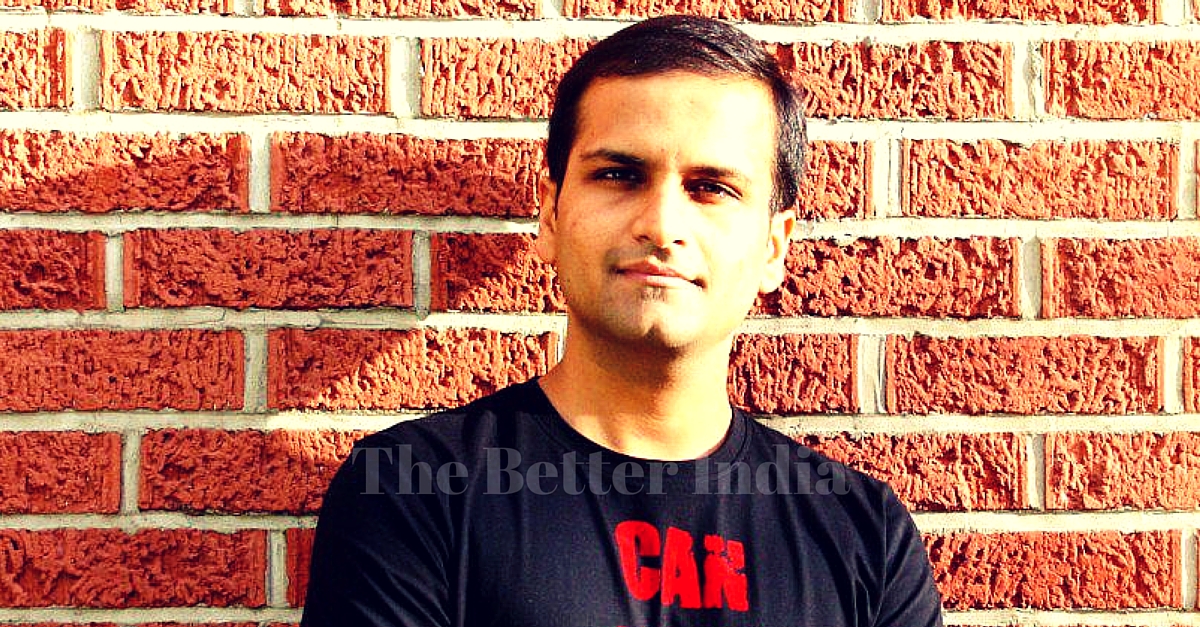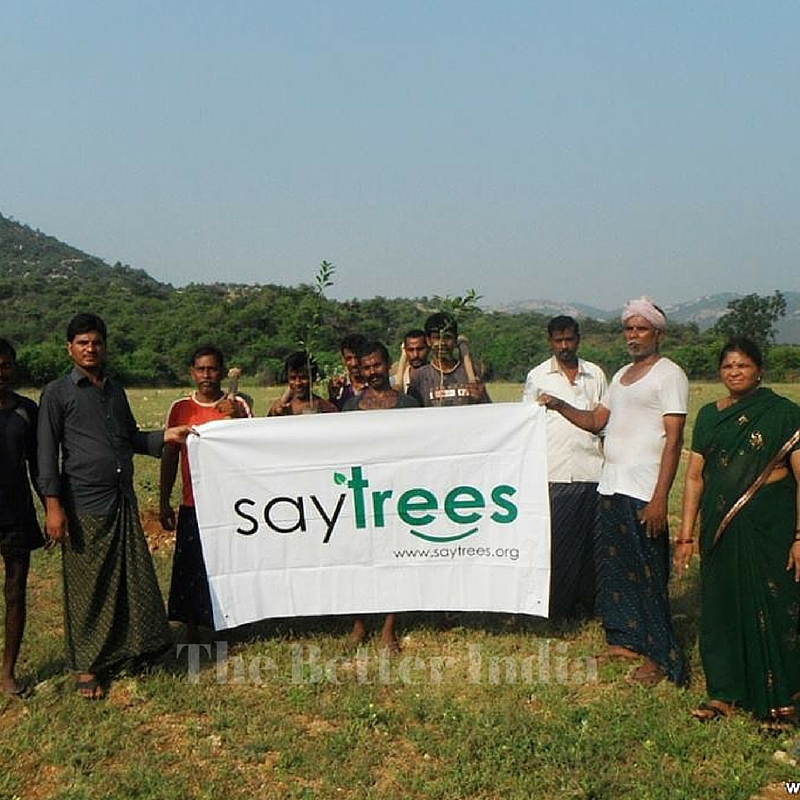A Software Engineer from Chhattisgarh Is Making Bengaluru Green. With over 35,000 Trees so Far!
A software engineer from Chhattisgarh came to Bengaluru 11 years ago. Concerned about the decreasing green cover in the city, he started planting trees on weekends in the year 2007. In the past eight years he has planted over 35,000 saplings and organized numerous plantation drives.

A software engineer from Chhattisgarh came to Bengaluru 11 years ago. Concerned about the decreasing green cover in the city, he started planting trees on weekends in the year 2007. In just eight years, he has planted over 35,000 saplings and organized numerous plantation drives.
The best time to plant a tree was 20 years ago. The next best time is now.” -– Chinese proverb.
There’s nothing like the shade of a tree to rest under if you have to take a walk on a hot summer afternoon. The six to seven-year-old trees on the Outer Ring Road of Bengaluru may not be ready to provide this respite quite as yet, but a start has been made in the right direction.
These trees exist thanks to the efforts of Kapil Sharma, the man behind the increasing green cover in the city. Kapil is a software engineer from Chhattisgarh who came to Bengaluru 14 years ago and fell instantly in love with the city. He loved the huge green spaces, pleasant weather and the canopies of trees across the city.
Since then, he has seen the city change gradually. The climatic conditions are not the same and Bengaluru has been becoming hotter due to the reduction of the green cover.
Kapil decided to do something about this problem and started planting tree saplings. He started with a few locations near his house and on the way to his office. But he did not feel this was enough. So he approached the Bruhat Bengaluru Mahanagara Palike (BBMP) to get information about more places where he could plant saplings.
“Since I had a full-time job, I visited BBMP offices on Saturdays to look for officials who were equally passionate about the cause,” says Kapil.
With time, Kapil became increasingly determined to plant more trees in and around the city. So he started an organization, ‘Say Trees,’ to give a more aggressive push to his efforts in 2007.

Initially, Kapil took on the job alone. But he was joined by like-minded environment enthusiasts soon after. The team would organise various tree plantation drives across the city and began to gradually engage more people in its efforts.
Kapil’s work starts with identifying a location for planting saplings and seeking permission from the government to plant trees there. This is followed by promotion of the tree plantation drive on social media, where he ropes in more people to join the drive.
“I try to promote events in unique ways, which encourage people to join us,” says Kapil. He recalls one such effort when he was planning to do a plantation drive in Gunjurpalya forest. He posted pictures of the forest on social media and asked parents to bring their kids to the plantation drive as well so they could personally experience nature. Since the forest also had a nice bike trail, he provided photos of the forest to biker groups who joined the drive.
Kapil and his team take special care during the plantation to ensure a high survival rate for the saplings. They choose locations that do not see excessive human and animal intervention. In addition, they plant saplings that are already 8 to 12 feet tall and two to three years old, since these plants have a higher survival rate and require less care.
Kapil’s work does not end with planting the saplings. He tries to take care of them for as long as possible. The Say Trees team waters them regularly and watches over them for a few months. After this, they engage the local communities from nearby locations to take care of the plants.

The usual season for planting the saplings lasts from May to October. This is followed by maintenance efforts for almost a year. The team also makes thorn fences around the saplings to prevent stray animals from destroying them. Thanks to these interventions, the survival rate of the saplings planted by the team stands at an impressive 80 to 90 percent.
Apart from public places and other locations around Bengaluru, the Say Trees team also takes its green cover campaign to schools, communities and corporates. “We want to encourage more schools and corporates to engage in such drives. Especially corporates, since it also serves their purpose of engaging in CSR activities and helps us easily get funds to buy saplings,” says Kapil. As a result, Say Trees has started getting sponsorships from a few corporate houses, in addition to some saplings and help from BBMP.
Say Trees conducted its first plantation drive in 2007 and since then the group has planted over 35,000 saplings. Initially slow, the work picked up speed over the last two years in particular, with 20,000 saplings planted and 35 plantation drives conducted in this time frame alone.
One of the most successful tree plantation drives by the group includes planting over 2,500 saplings in August 2015 at Jarakbande forest reserve in north Bengaluru in just one day with help of over 600 people.
Though the team continues to face challenges in terms of finding the right locations, sponsors and volunteers in Bengaluru, Kapil wants to expand his efforts to other cities now. For this reason, he has started contacting forest departments in other areas.
“I don’t want to get into roadside plantation because those trees do not survive much. I want to go to villages and locations with less population and increase the green cover there,” says Kapil.
Kapil also wants to work with farmers and help them adopt sustainable farming practices. “I want them to plant fruit bearing trees in the empty patches of their farms so that even in the off season or during times of low harvest, they can survive. This will easily help them earn Rs. 80,000 to Rs. 1 lakh extra annually,” says Kapil.
With each new sapling Kapil plants, he is creating a better future for the next generation of citizens in the country. And if you too want to be part of this mission, the best time is now. Check out the Say Trees website to know about his upcoming tree plantation drives.
Like this story? Or have something to share? Write to us: [email protected], or connect with us on Facebook and Twitter (@thebetterindia).
If you found our stories insightful, informative, or even just enjoyable, we invite you to consider making a voluntary payment to support the work we do at The Better India. Your contribution helps us continue producing quality content that educates, inspires, and drives positive change.
Choose one of the payment options below for your contribution-
By paying for the stories you value, you directly contribute to sustaining our efforts focused on making a difference in the world. Together, let’s ensure that impactful stories continue to be told and shared, enriching lives and communities alike.
Thank you for your support. Here are some frequently asked questions you might find helpful to know why you are contributing?


This story made me
-
97
-
121
-
89
-
167












